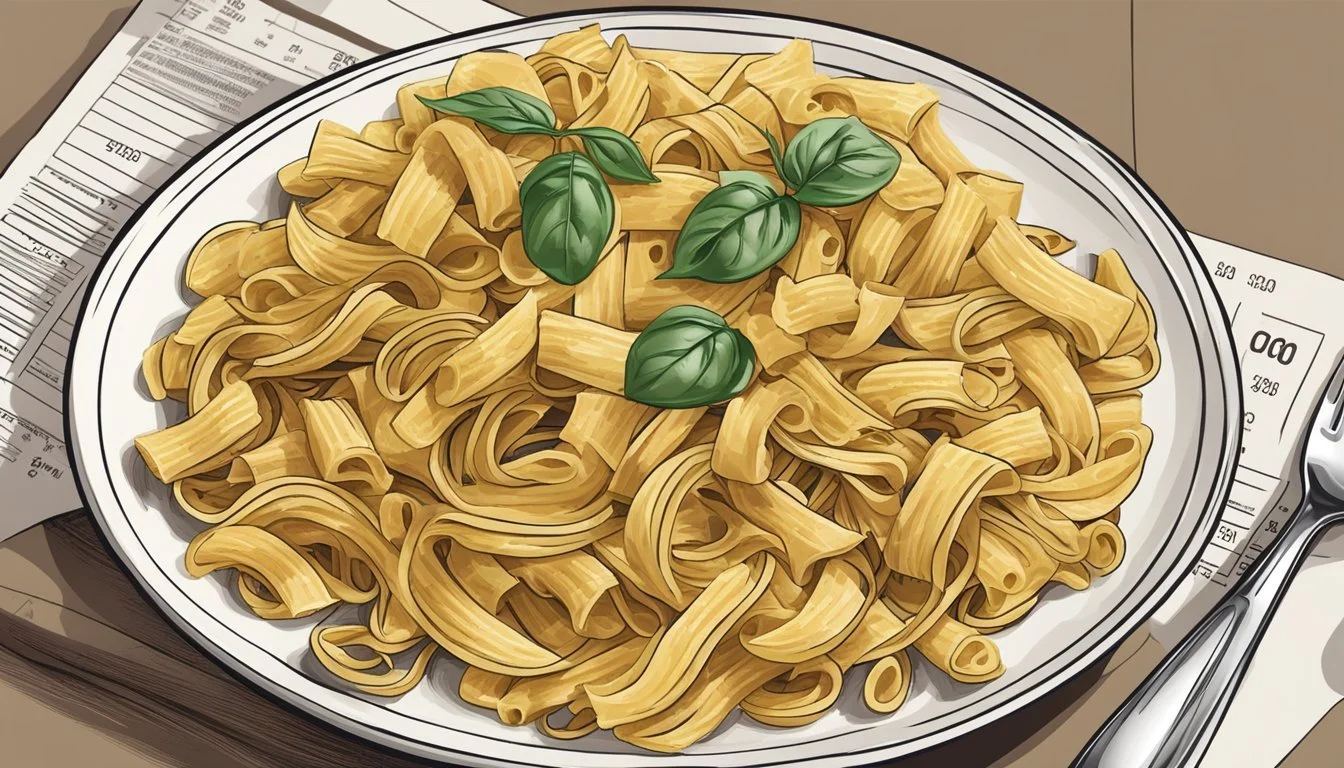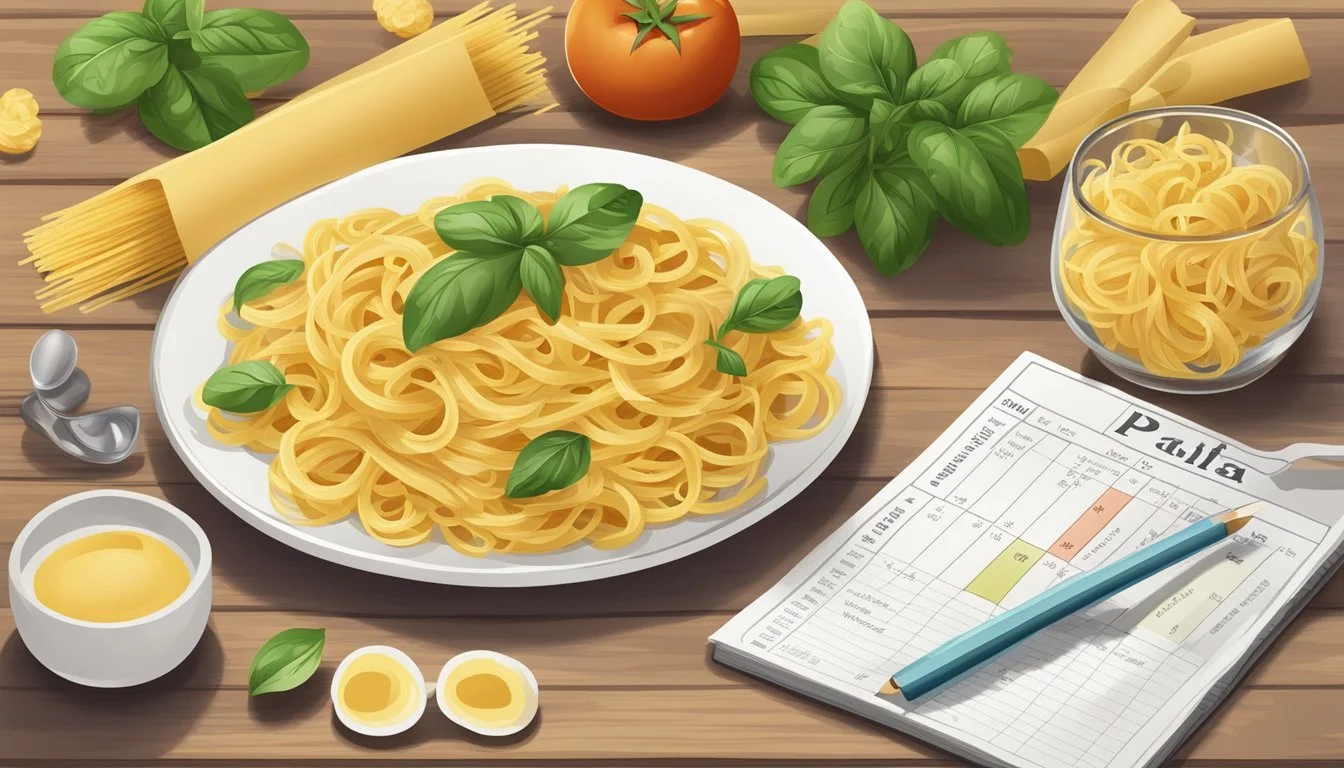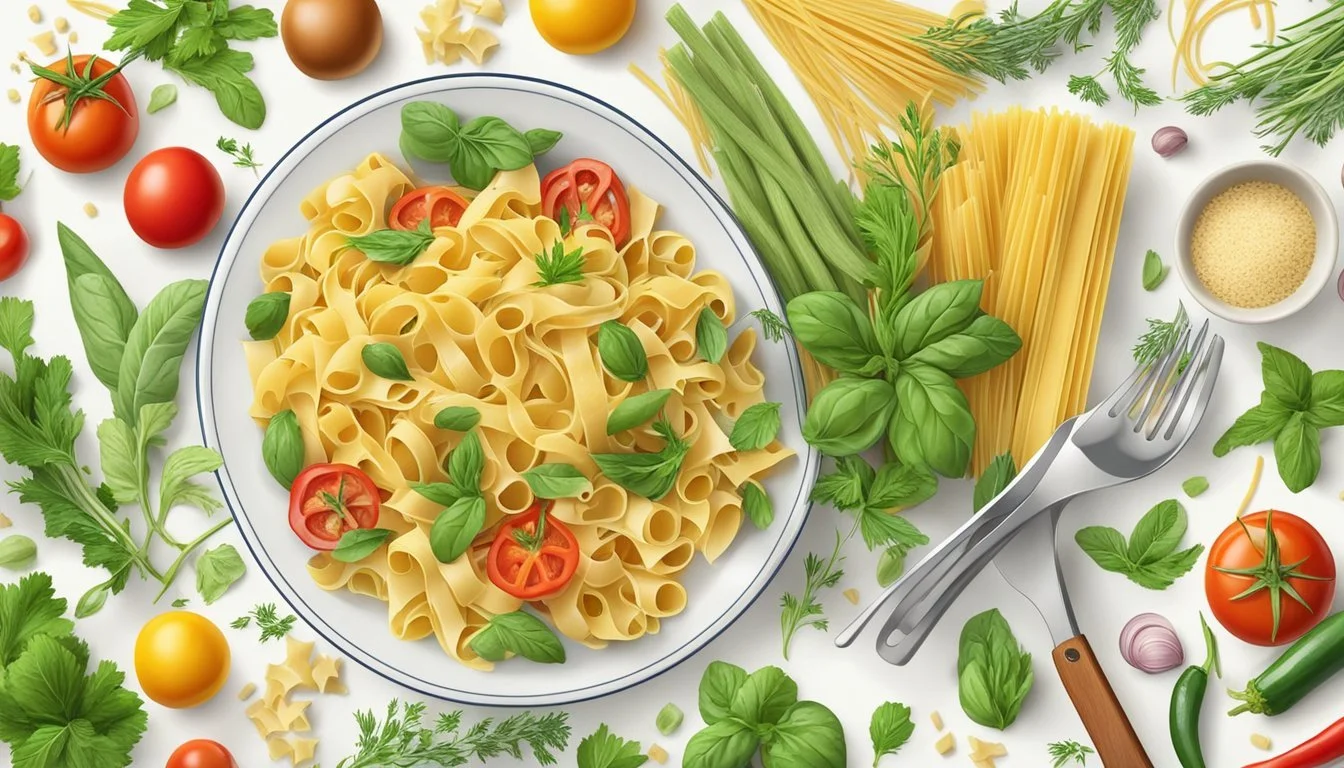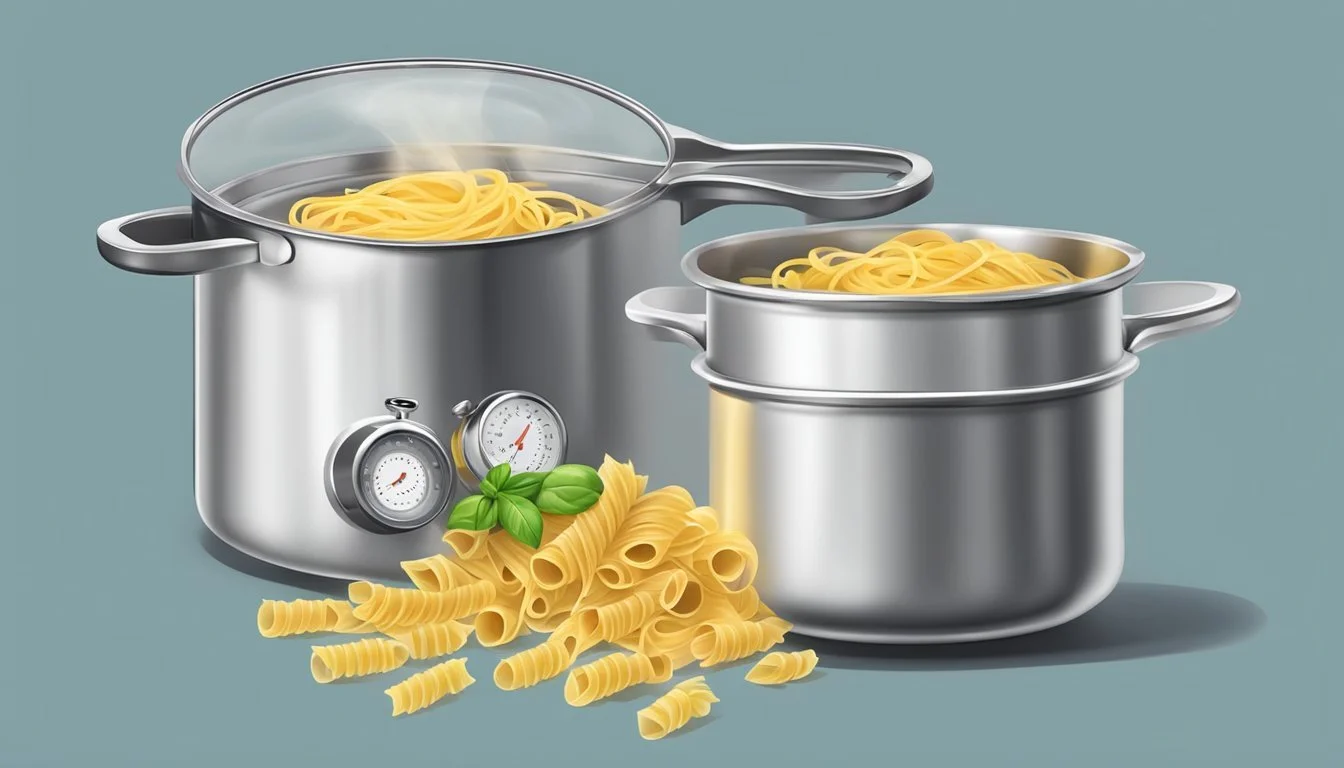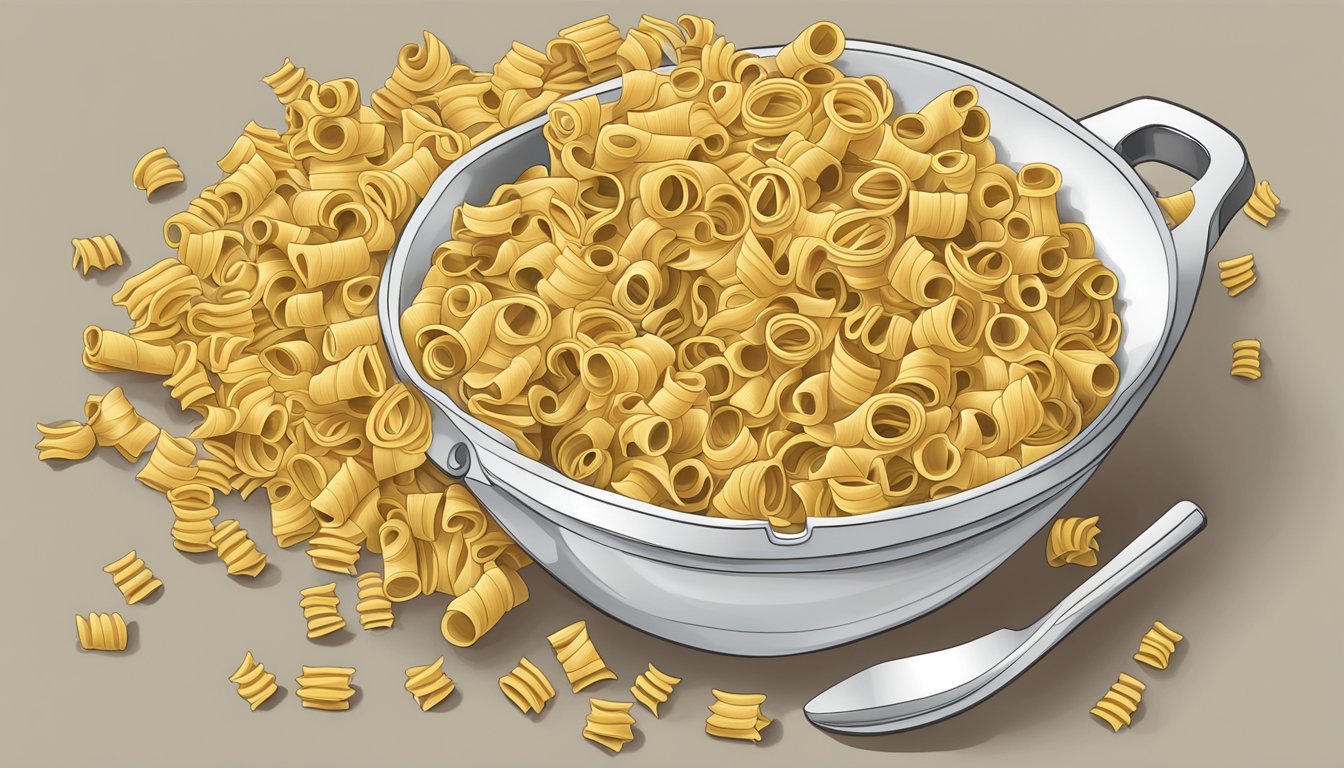How Much Pasta Per Day Is Too Much?
Understanding Healthy Portion Sizes
Determining the appropriate amount of pasta (What wine goes well with pasta?) to consume daily has been a topic of discussion among nutritionists and food enthusiasts alike. With its status as a staple in many diets worldwide, pasta offers versatility and comfort. However, its consumption must be balanced against concerns over carbohydrates, calorie intake, and nutritional diversity. Health experts suggest that around 2-3 servings of pasta, with each serving being roughly 2 ounces of dry pasta or about 1 cup of cooked pasta, can be incorporated into a healthy daily diet for most individuals.
It's important to consider the type of pasta and what constitutes a balanced meal when including pasta in the diet. Whole-grain pasta variants are often recommended over refined versions due to their higher content of fiber and nutrients, which can contribute to heart health and potentially lower the risk of chronic diseases. The key is to pair pasta with nutrient-rich foods such as vegetables, lean proteins, and healthy fats to create a nutritionally complete meal that aligns with individual dietary needs.
While pasta can be a component of a nutritious diet, moderation is crucial. The exact amount considered too much can vary based on factors such as a person’s overall diet, physical activity level, and health goals. In practice, this translates to being mindful of portion sizes and nutritional balance rather than a one-size-fits-all prescription for daily pasta intake.
Understanding Pasta and Its Nutritional Value
Pasta, a staple in many diets around the world, provides a significant source of carbohydrates and can be enriched with essential nutrients. Assessing its nutritional value involves exploring the types of pasta, their specific content, and the health benefits they offer.
Types of Pasta
Durum Wheat Pasta: Traditional pasta is made from durum wheat semolina, offering a firm texture.
Whole Wheat Pasta: Contains more fiber and nutrients compared to refined pasta, due to the inclusion of the whole grain.
Bean-Based Pasta: High in protein and fiber, it's an alternative for those seeking gluten-free options or higher nutrient content.
Gluten-Free Pasta: Made from a variety of grains like rice or corn, catering to those with gluten intolerances.
Nutritional Content of Different Pastas
Pasta's nutritional value varies depending on the type:
Type of Pasta Calories per Cup Protein Carbs Fiber Fat Durum Wheat (Cooked) 220 kcal 8g 40g Low Low Whole Wheat (Cooked) Higher than regular Higher Similar Higher Low Bean-Based Varies by brand Higher Lower Higher Low Gluten-Free Varies by brand Varies Varies Varies Low
Note that one cup of cooked pasta typically equates to approximately 200-220 kilocalories.
Health Benefits of Pasta
Pasta can be part of a healthy diet when consumed in moderation:
Energy: Pasta's carbohydrates are a primary source of energy.
Important Nutrients: Enriched pasta offers additional nutrients, such as iron and B vitamins like riboflavin, thiamin, and folic acid.
Protein: Bean-based pastas are particularly high in protein, supporting muscle repair and growth.
Healthy Fats: While pasta is generally low in fat, it can be paired with healthy fats in the diet from other sources.
Pasta's role in a balanced diet is significant, given that it accommodates numerous dietary needs and preferences while offering nutritional diversity and energy.
Recommended Daily Pasta Intake
When considering the daily intake of pasta, one must take into account both the portion size and how it fits within overall dietary patterns.
Portion Size and Serving Guidelines
The portion size of pasta typically recommended by dietitians is 1/2 cup of cooked pasta, which is roughly equivalent to 1 ounce in dry weight. For a complete meal, a single serving might increase to about 2 ounces of dry pasta per person, equating to a 1 cup cooked serving. It's important to distinguish between portion size, which is the amount of pasta one chooses to eat, and serving size, which is a specified amount that's often used for nutritional guidance.
Standard Portion Size:
Cooked Pasta: 1/2 cup
Dry Pasta: 1 ounce
Single Serving Size for a Meal:
Cooked Pasta: 1 cup
Dry Pasta: 2 ounces
Pasta Consumption Patterns
Americans are known for their high pasta consumption, with the average person eating approximately 20 pounds of pasta annually. When pasta is chosen, whole grain options are preferable due to their higher nutritional value, including fibers and micronutrients. These can contribute to reduced risks of heart disease and obesity when included in a balanced diet. Pasta consumption should be in moderation and not exceed 3 servings a week to prevent excessive calorie intake and ensure a varied diet.
Balancing Pasta in Your Diet
Pasta can be a wholesome part of a balanced diet when portioned appropriately and paired with nutrient-rich foods. It is important to consider the contents of each meal to ensure that one is obtaining a wide variety of nutrients.
Creating a Balanced Meal
To create a balanced meal with pasta, one should aim for moderate portions. About 2-3 servings of pasta are considered acceptable, with one serving being equivalent to 2 ounces of dry pasta or 1 cup of cooked pasta. A balanced meal includes a mix of carbohydrates, proteins, and fats, along with vitamins and minerals which come from an array of food groups.
Carbohydrates: Opt for whole grain pasta when possible for added fiber and nutrients.
Proteins: Lean meats or plant-based proteins such as legumes can be a healthful addition.
Fats: Incorporate healthy fats like olive oil or nuts.
Vitamins & Minerals: A variety of vegetables can boost the nutrient profile of the meal.
Pairing Pasta with Vegetables and Proteins
Pairing pasta with vegetables and proteins is integral to achieving a nutritious diet. Vegetables provide essential vitamins, minerals, and fiber. They should ideally make up at least half of your plate. Proteins are crucial for maintaining muscle mass and overall health, and should occupy a quarter of the plate.
Vegetables: One can include a salad with a variety of colorful vegetables or mix vegetables such as spinach, tomatoes, or broccoli directly into the pasta dish.
Proteins: Options include grilled chicken, fish, tofu, or white beans for a plant-based choice, which can either top the pasta or be mixed within the dish.
By considering these components, one can enjoy pasta regularly within a nutrient-dense and balanced diet.
Health Considerations and Risks
When considering pasta as part of a daily diet, it's important to assess its health implications, including its impact on weight management, blood sugar levels, and cardiovascular health.
Pasta and Weight Management
Pasta can contribute to weight gain if consumed in large quantities because it is high in carbohydrates which can be converted into fat if excess calories are not expended. Monitoring portion size is crucial as a typical serving size is approximately 1 cup of cooked pasta, which contains roughly 200 calories.
The Impact of Pasta on Blood Sugar and Diabetes
Pasta, especially when refined, has a considerable effect on blood sugar levels due to its high carbohydrate content. Individuals with diabetes must carefully manage carb intake to maintain healthy blood sugar levels. Choosing whole-grain pasta can result in a lower glycemic index, which may have less of an immediate impact on blood sugar levels.
Pasta and Cardiovascular Health
The relationship between pasta and cardiovascular health can be complex. While pasta itself is low in saturated fat, which is beneficial for heart health, it often accompanies high-fat sauces and cheese, which can contribute to increased risks of heart disease. Portion control and selecting healthier, nutrient-packed sauces can mitigate these effects. High consumption of refined pasta is linked to an increased risk of chronic diseases, including cardiovascular disease, although other studies have suggested moderate pasta consumption might be associated with a lower risk of heart disease.
Pasta Cooking Tips and Techniques
Mastering pasta preparation is essential for any pasta lover. This section delves into the essential techniques to measure, cook, and store pasta, ensuring a perfect pasta meal every time.
Measuring the Right Amount of Pasta
To serve the perfect portion of pasta, dry pasta is typically measured by weight. For a single serving, a good rule of thumb is about 2 ounces (56 grams) of dry pasta. Since pasta shapes vary in size and volume, use a kitchen scale for accuracy or look for serving suggestions on the pasta package. For bulk preparations, one pound of dry pasta generally serves four as a main dish or eight as a starter or side.
Cooking Pasta to Perfection
Cooking pasta to perfection is a simple yet precise process:
Water-to-Pasta Ratio: Use about 4 quarts (16 cups) of water per pound of dry pasta to prevent sticking and ensure even cooking.
Adding Salt: For each quart of water, add approximately 1 tablespoon of salt. The salted water should have the taste of seawater.
Boiling: Bring the pasta water to a rolling boil before adding the pasta.
Cooking Time: Consult the pasta package for the approximate cooking time, and start tasting the pasta a couple of minutes before the minimum time to achieve 'al dente' texture.
Reserving Pasta Water: Reserve a cup of the starchy pasta water before draining. It can be used to adjust the consistency of sauces.
Storing Cooked Pasta
After cooking, if not using immediately:
Drain Well: Drain the pasta but do not rinse it, as this can remove the starch that helps sauce adhere.
Storing Right Away: Toss with a little olive oil or sauce to prevent sticking. Transfer to an airtight container and refrigerate.
Reheating: To reheat, briefly submerge in boiling water or reheat in a sauce.
By applying these techniques, one can ensure a delightful pasta experience with optimal flavor and texture.
Pasta Varieties and Their Uses
Pasta comes in numerous shapes and sizes, each serving its unique purpose in various dishes. Knowing the differences between pasta varieties and their optimal uses enhances the quality and authenticity of the dishes they become part of.
Traditional vs. Modern Pasta Shapes
Traditional pasta shapes have stood the test of time due to their regional and cultural significance. Shapes like spaghetti and fettuccine are long and thin, often complementing smoother sauces like alfredo and marinara. Tagliatelle, a broader version of fettuccine, is ideal for thicker sauces. The tubular shapes, such as ziti, penne, and rigatoni, are designed to hold hearty, chunky sauces, making them staples in baked pasta dishes (What wine goes well with pasta dishes?) like ziti al forno.
Contrastingly, modern pasta shapes have been designed to adapt to evolving culinary trends. Innovations in pasta-making technology have produced shapes like rotini and medium shells, which are not only visually appealing but also excel at trapping and holding onto sauces, making every bite flavorful. Some modern shapes are also made from alternative grains for those seeking refined pasta options, catering to health-conscious consumers.
Choosing Pasta for Different Dishes
Selecting the right pasta shape can significantly impact the dish's texture and sauce pairing. Here is a focused guide:
Long and Slender: Angel hair and vermicelli are delicate options that pair well with light, olive oil-based sauces.
Long and Flat: Linguini and fettuccine embrace creamier sauces with their broader surface area.
Tubular: Penne and rigatoni have hollow centers making them perfect for capturing thick, chunky meat sauces.
Small and Versatile: Orzo resembles rice grains and adapts well in soups and salads.
Shaped for Filling: Farfalle (bow tie) and large shells are suitable for holding onto chunks of ingredients in pasta salads and baked casseroles.
Textured Surfaces: Shapes like rotini and medium shells create pockets for sauces to cling to, ideal for robust and hearty dishes.
A dish such as spaghetti and meatballs utilizes the long strands of spaghetti to balance out the texture and weight of meatballs. Similarly, a classic mac and cheese is often made with elbow macaroni due to its ability to hold creamy cheese sauces in its curved structure. Understanding the compatibility between the pasta shape and the components of the dish is key to perfecting pasta-based meals.
Common Questions About Pasta
In this section, one will find clear answers to frequently asked questions about pasta consumption, and uncover the truth behind common pasta myths. It aims to deliver confident and knowledgeable insights on how pasta fits into a daily diet.
Pasta FAQs
How much pasta is too much?
The recommended serving size for pasta is about 2 ounces of dry pasta or 1 cup of cooked pasta. According to dietitians, 2-3 servings of pasta can be incorporated healthily into the daily diet for most individuals, but these portions should be balanced with other food groups.
What nutrients does pasta provide?
Pasta is a source of complex carbohydrates and also contains several essential nutrients when made from whole grains, including manganese, copper, phosphorus, selenium, and iron.
Can pasta be included in a diet if one has chronic disease concerns?
Those managing chronic diseases should consider the pasta's glycemic index and the presence of sodium or gluten in their diet. Whole grain pasta may be a better option, offering more nutrients and fiber compared to refined pasta.
Addressing Pasta Myths
Is pasta always high in sodium?
Pasta itself is not typically high in sodium; rather, it is the sauces and seasonings that often contribute to the sodium content of a pasta dish.
Does pasta consumption lead to cravings?
Pasta might cause cravings if one is sensitive to blood sugar spikes; however, opting for whole grain variants or balancing with protein can mitigate such effects.
Are all pasta recipes complicated?
Pasta recipes can range from the very simple to the more complex. Traditional Italian pasta dishes often embrace simplicity, focusing on a few high-quality ingredients for flavor.
Conclusion
When assessing optimal pasta consumption, portion control and the quality of pasta are critical factors. Nutritionists recommend about 2-3 servings per day, considering that a single serving size is typically 2 ounces of dry pasta or 1 cup of cooked pasta. However, individual dietary needs may vary, and one must account for activity levels, overall health, and specific nutritional goals.
Emphasizing moderation, a person might find that including pasta as a part of a diverse diet has benefits. To mitigate health risks such as increased blood pressure linked to the consumption of refined carbs, it’s advised to opt for whole-grain varieties and to integrate plenty of vegetables, lean proteins, and healthy fats into pasta dishes.
For those with gluten sensitivities or intolerances, symptoms like bloating and abdominal pain after eating wheat-based pasta suggest that alternative grain or legume-based pastas should be explored.
To summarize, they should aim for:
2-3 servings (2 oz dry or 1 cup cooked per serving)
Whole-grain options over refined
Balanced meals with vegetables and proteins
Awareness of personal health conditions like gluten intolerance
By adhering to these guidelines, individuals can enjoy pasta in their daily meals without overindulgence, helping ensure that it remains a healthy component of their diet.


